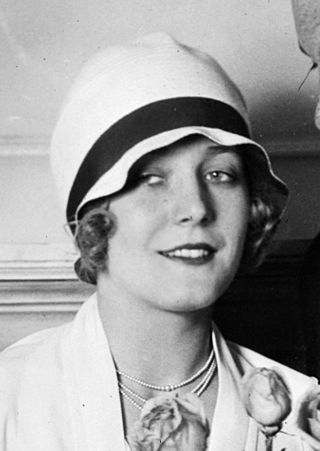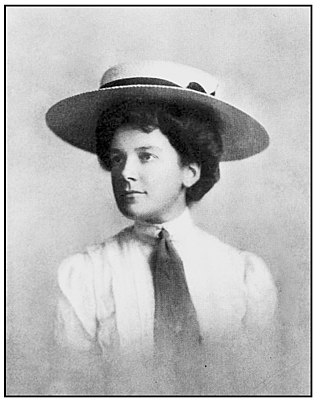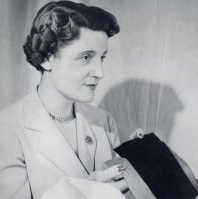Related Research Articles

Philip Anthony Treacy is an Irish haute couture milliner, or hat designer, who has been mostly based in London for his career, and who was described by Vogue magazine as "perhaps the greatest living milliner". In 2000, Treacy became the first milliner in eighty years to be invited to exhibit at the Paris haute couture fashion shows. He has won British Accessory Designer of the Year at the British Fashion Awards five times, and has received public honours in both Britain and Ireland. His designs have been displayed at the Victoria and Albert Museum and the Metropolitan Museum of Art.

Hat-making or millinery is the design, manufacture and sale of hats and other headwear. A person engaged in this trade is called a milliner or hatter.

Lilly Daché was a French-born American milliner and fashion merchandiser. She started her career in a small bonnet shop, advanced to being a sales lady at Macy's department store, and from there started her own hat business. She was at the peak of her business career in the 1930s and 1940s. Her contributions to millinery were well-known custom-designed fashion hats for wealthy women, celebrities, socialites, and movie stars. Her hats cost about ten times the average cost of a lady's hat. Her main hat business was in New York City with branches in Paris. Later in her career she expanded her fashion line to include dresses, perfume, and jewelry.

Jeanne-Marie Lanvin was a French haute couture fashion designer. She founded the Lanvin fashion house and the beauty and perfume company Lanvin Parfums.

History of fashion design refers specifically to the development of the purpose and intention behind garments, shoes, accessories, and their design and construction. The modern industry, based around firms or fashion houses run by individual designers, started in the 19th century with Charles Frederick Worth who, beginning in 1858, was the first designer to have his label sewn into the garments he created.

The cloche hat or simply cloche is a fitted, bell-shaped hat for women that was invented in 1908 by milliner Caroline Reboux. They were especially popular from about 1922 to 1933. Its name is derived from cloche, the French word for "bell".

Fashion in France is an important subject in the culture and country's social life, as well as being an important part of its economy.
Eugenia Kim is a New York City-based accessories designer best known for her line of hats.

Caroline Reboux was a Parisian milliner and French fashion designer. She opened her first boutique at 23 rue de la paix in Paris in 1865, which she continued to operate throughout her life. Reboux opened other shops in Paris and London starting in 1870. She trained other milliners who became famous in their own right, including American milliner Lilly Daché and French milliner Rose Valois. Reboux's most famous shop was located at 9 Avenue Matignon in Paris, which carried on operating after her death for almost three decades under the direction of Lucienne Rabaté known as "Mademoiselle Lucienne" the most famous parisian milliner at that time.

Madame Agnès was a French milliner who designed hats that were popular from the late 1920s until the 1940s. Her shop was located on the Rue Saint-Honoré.

A sailor hat is a brimmed straw hat similar to those historically worn by nineteenth century sailors before the sailor cap became standard. It is very close in appearance to the masculine boater, although "sailors" as worn by women and children have their own distinct design, typically flat-crowned, wide-brimmed and with a dark ribbon band extending into streamers hanging off the brim. Such hats could also be made in felt as an alternative to straw.

For the French general and diplomat, see Claude Carra Saint-Cyr

A bumper brim is a millinery feature in which the hat brim is tubular in design, making it a prominent feature of the hat. In order to achieve this effect, the brim may be rolled, stiffened or padded. A bumper brim can be added to a variety of hat designs, from small to large.

A fashion merchant is a businessperson specialising in the production and the sale of fashion accessories, especially adornments for hairstyles and gowns. The profession emerged in the early eighteenth century and reached its height at the end of the 1700s. The women and occasional men who practised as fashion merchants played a central role in the diffusion of styles in this period.

Louis Hippolyte Leroy (1763–1829) was a French fashion merchant who founded the House of Leroy, one of the foremost fashion houses of the early 19th century First Empire Paris. He is known as the favorite fashion trader and the official fashion designer of empress Josephine de Beauharnais. He was very successful and also provided dresses for several other royal and Princely courts in Europe during the early 19th century.
Madame Victorine (19th-century), was a French fashion designer couturier.
Madame Virot (1826-1911) was a French fashion designer milliner. Alongside Caroline Reboux, she was one of the two most famous hat designers in Paris during the second half of the 19th-century.

Marie-Françoise Corot (1768–1851) was a French fashion designer (milliner), known as one of the most fashionable of her trade in the first decades of the 19th-century.
Madame Laferrière (19th-century) was a French fashion designer milliner. She belonged to the elite of the French fashion industry during the Second Empire.
Mademoiselle Félicie (19th-century) was a French fashion designer milliner. She belonged to the elite of the French fashion industry during the Second Empire.
References
- ↑ Madeleine Ginsburg: The Hat: Trends and Traditions, 1990
- ↑ Madeleine Ginsburg: The Hat: Trends and Traditions, 1990
- ↑ Gary Tinterow, Michael Pantazzi, Vincent Pomarède, Jean-Baptiste-Camille Corot, Galeries nationales du Grand Palais (France), Musée des beaux-arts du Canada (Ottawa, Ont.)., National Gallery of Canada, Metropolitan Museum of Art (New York, N.Y.): Corot (New York, N.Y.)